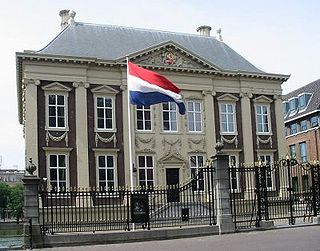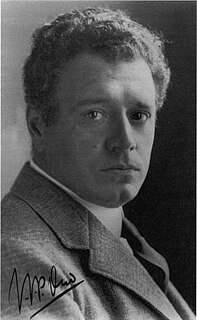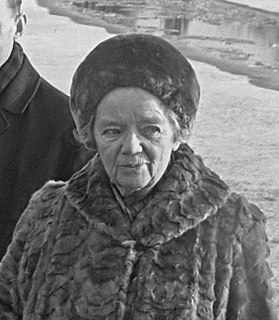
Jacob van Campen, was a Dutch artist and architect of the Golden Age.

The Amsterdam School is a style of architecture that arose from 1910 through about 1930 in the Netherlands. The Amsterdam School movement is part of international Expressionist architecture, sometimes linked to German Brick Expressionism.

Michel de Klerk was a Dutch architect. Born to a Jewish family, he was one of the founding architects of the movement Amsterdam School. Early in his career he worked for other architects, including Eduard Cuypers. For a while, he also employed the Indonesian-born Liem Bwan Tjie, who would later become his country's pioneering proponent of the Amsterdam School and modern architecture. Of his many outstanding designs, very few have actually been built. One of his finest completed buildings is 'Het Schip' in the Amsterdam district of Spaarndammerbuurt.

Jacobus Johannes Pieter Oud, commonly called J. J. P. Oud was a Dutch architect. His fame began as a follower of the De Stijl movement.

Jan Stuyt was a Dutch architect.

Berend Tobia Boeyinga was a Dutch architect noted for his Calvinist church buildings and as a practicing member of the Amsterdam School.

Eduard Cuypers was a Dutch architect. He worked in Amsterdam and the Dutch East Indies.

Wendingen was an architecture and art magazine that appeared from 1918 to 1932. It was a monthly publication aimed at architects and interior designers. The booklet was published by Amsterdam publisher Hooge Brug (1918–1923) and by the Santpoort publisher C.A. Mees (1924–1931). It was a mouthpiece for the architect association Architectura et Amicitia.. The chief editor was the architect Hendricus Theodorus Wijdeveld. Wendingen initially was an important platform for Dutch expressionism, also known as the Amsterdam School, and later endorsed the New Objectivity.

The Netherlands Architecture Institute (NAI) was a cultural institute for architecture and urban development, which comprised a museum, an archive plus library and a platform for lectures and debates. The NAI was established in 1988 and was based in Rotterdam since 1993. It ceased to exist in 2013, when it became part of Het Nieuwe Instituut.
Mecanoo is an architecture firm based in Delft, Netherlands. Mecanoo was founded in 1984 by Francine Houben, Henk Döll, Roelf Steenhuis, Erick van Egeraat and Chris de Weijer.

Erick van Egeraat is a Dutch architect and author. He heads the architectural practice based in Rotterdam with offices in Moscow, Budapest and Prague. He is best known for his projects of ING Group Headquarters in Budapest, Drents Museum in Assen, The Rock tower in Amsterdam, Incineration line in Roskilde, Main building and Auditorium in Leipzig University and the Corporate University of Sberbank in Moscow. He is the winner of RIBA Award 2007, Best Building Award 2011&2012 and European Property Award 2013.

Herman Hendrik Baanders, also known as Hermanus Hendrikus Baanders and H.H. Baanders, was a Dutch architect who was primarily active in Amsterdam.

Wilhelmina Drucker was a Dutch politician and writer. One of the first Dutch feminists, she was also known under her pseudonyms Gipsy, Gitano, and E. Prezcier.
Hubert-Jan Henket is a Dutch architect. He is a specialist in the relations between old and new buildings, the redesign of buildings, renovation and restoration. He is the founder of DOCOMOMO international.

Charlotte Ida Anna "Lotte" Stam-Beese was a German-Dutch architect and urban planner who helped with the reconstruction of Rotterdam after World War II.

Anne Zernike (1887–1972) was a Dutch, liberal theologian, who was the first ordained woman minister of the Netherlands. Though she began her career with the Mennonites, which was the only congregation that allowed female ministers at the time, the majority of her career was spent in the Dutch Protestant Association (NPB).

Karel Petrus Cornelis de Bazel was a modern Dutch architect, engraver, draftsman, furniture designer, carpet designer, glass artist and bookbinding designer. He was the teacher of Adriaan Frederik van der Weij and the first chairman of the Bond van Nederlandse Architecten, beginning in 1909.
Jan Frederik ("Frits") Staal, was a Dutch architect, and a major figure in the development of modern architecture in the Netherlands in the first half of the twentieth century. He was the father of the architects Arthur and Georges Staal and the linguist and South Asia scholar Jan Frederik Staal.

Hendricus Theodorus Wijdeveld was a Dutch architect and graphic designer. He was an important figure of the Amsterdam School and is known for his work as editor-in-chief for the Wendingen magazine.

Jakoba Helena Mulder was a Dutch architect and urban planner remembered for her designs of two large city parks and the creation of livable housing and play spaces in Amsterdam.


















